Growing and caring for plants can be a really rewarding hobby. You get to create life and watch it grow into a mature plant as you look after it. But different plants require different care, and if you’re looking to become a pro gardener, you might want to learn about the specific plant you’re looking to grow. This article will cover the different types of ice plants, and how you can look after them to make sure they are happy and healthy!
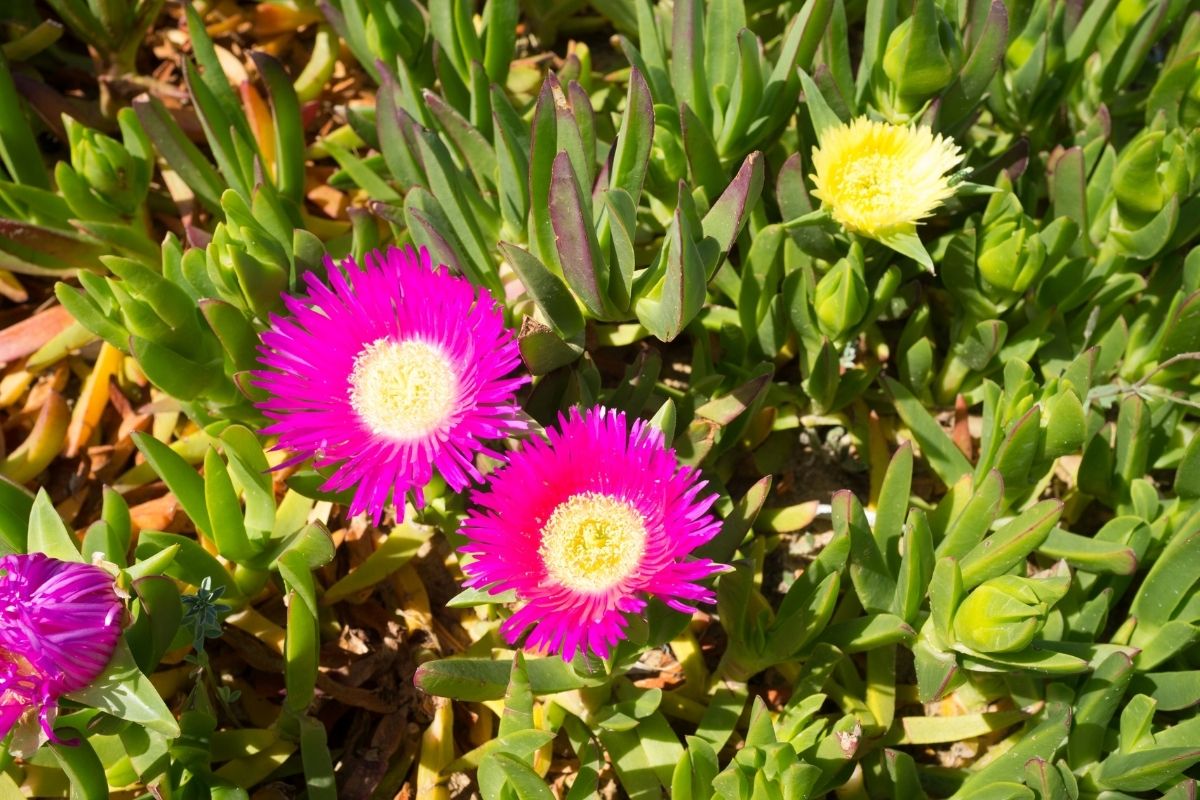
What Are Ice Plants?
Ice plants are succulents that grow well in cooler climates. They are usually green or blue-green when dormant but turn vibrant colors during summer.
Their flowers are often brightly colored. Some species have red, yellow, and orange blooms.
Ice plants can be grown as houseplants indoors or outdoors. The best way to care for them is to keep the soil moist at all times. Watering should be done regularly throughout the day.
It’s also important to fertilize your plants every month. Fertilizer will help the plant produce more leaves and flowers. You can use a fertilizer specifically designed for succulents such as Desert Bloom.
7 Types Of Ice Plants
There are many different types of ice plants available. Different ice plants have different appearances and may need caring for differently.
Check out these descriptions of different types of ice plants so you can learn more about yours.
1. Ice Plant Kelaidis (Delosperma Kelaidis)
These ice plants are beautiful when they bloom in summer. Their foliage looks like tiny pieces of ice. They are very easy to grow, but they need bright light and water. They tolerate drought and heat.
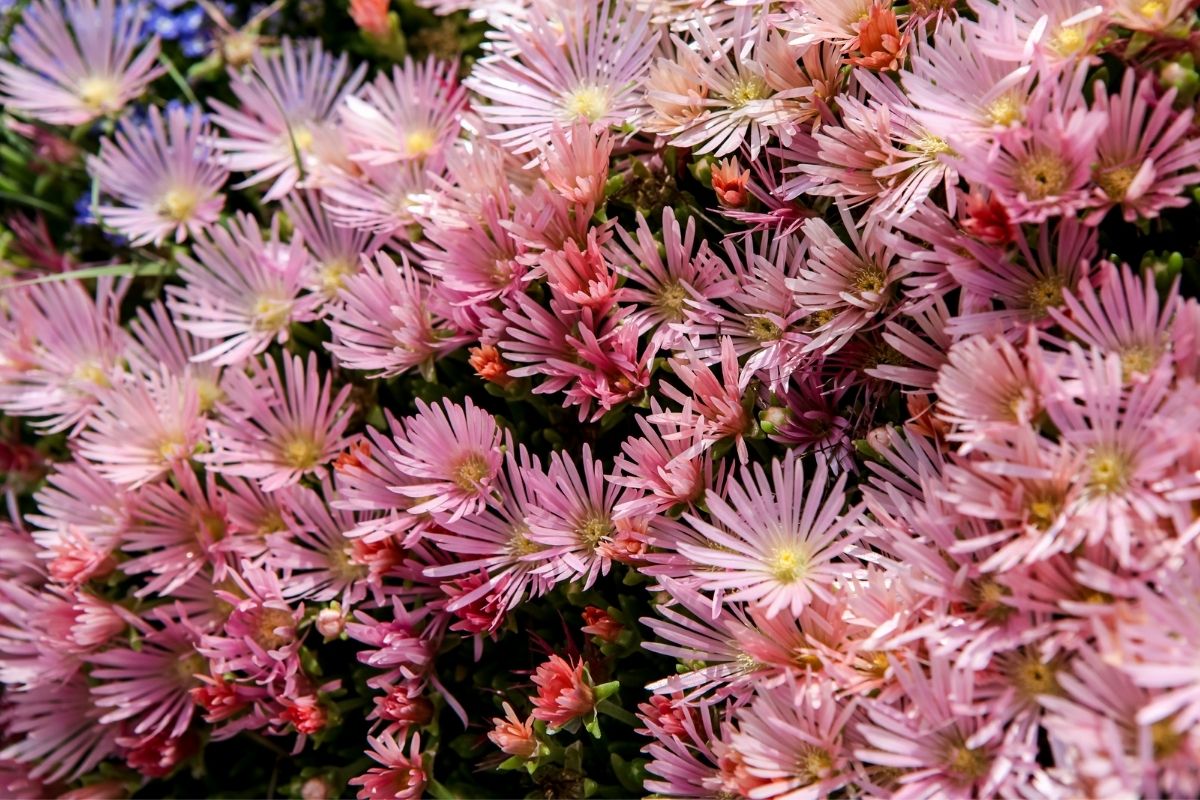
These ice plants are succulents that are native to South and East Africa. They have flowers that are shaped like a daisy and grow in mats.
They are useful plants to use as a ground cover because they are low growing and spread quickly.
2. Cooper’s Hardy Ice Plant (Delosperma Cooperi)
A hardy ice plant is a rapidly growing succulent that blooms in summer and fall. It grows 6 to 7 feet tall and spreads 24 inches.
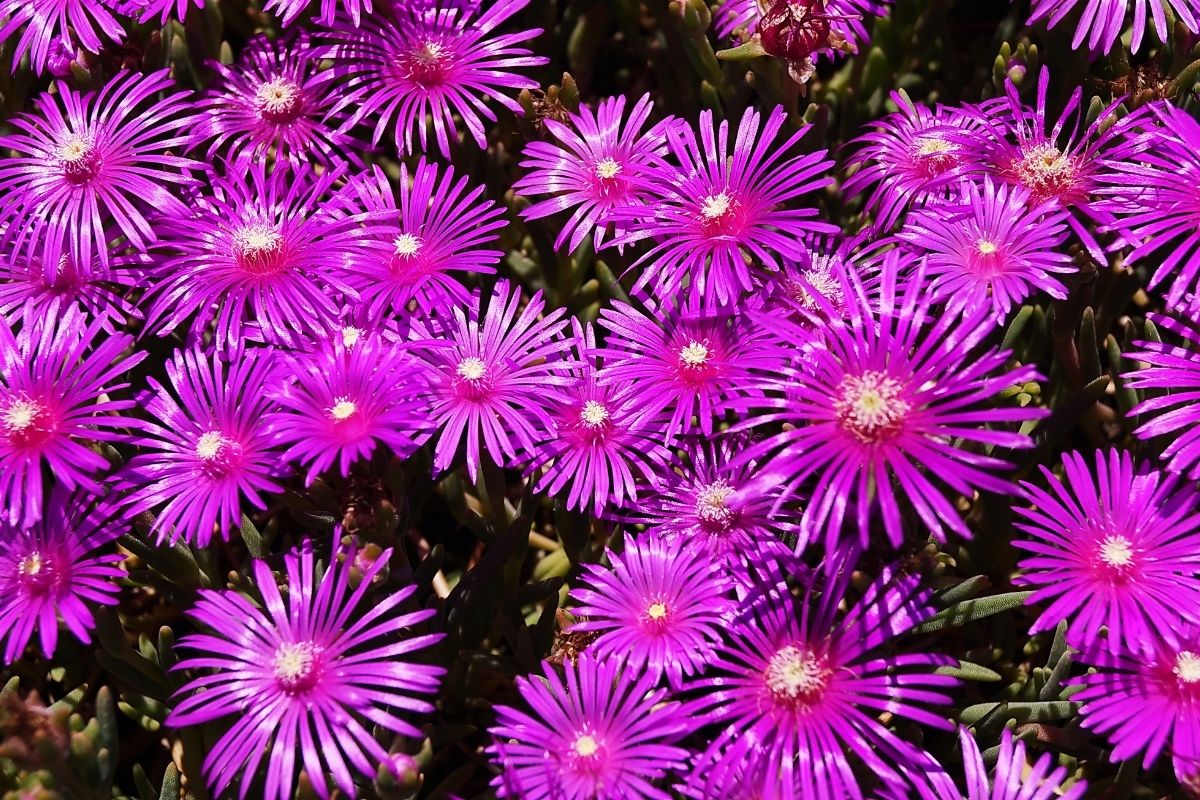
The hardy ice plant’s dark green, shiny, succulent leaves are drought tolerant to withstand periods of limited water.
Masses of 2-inch wide, daisy-like flowers are bright pink to purple bloom. They grow best in full sun and light shade conditions and well-drained soils.
Cooper’s hardy ice plants grow fast and bloom during the summer.
3. Hardy Ice Plant (Delosperma Nubigena)
Hardy ice plants are tough, fast-growing plants that tolerate both hot and cold temperatures. They grow quickly and bloom early.
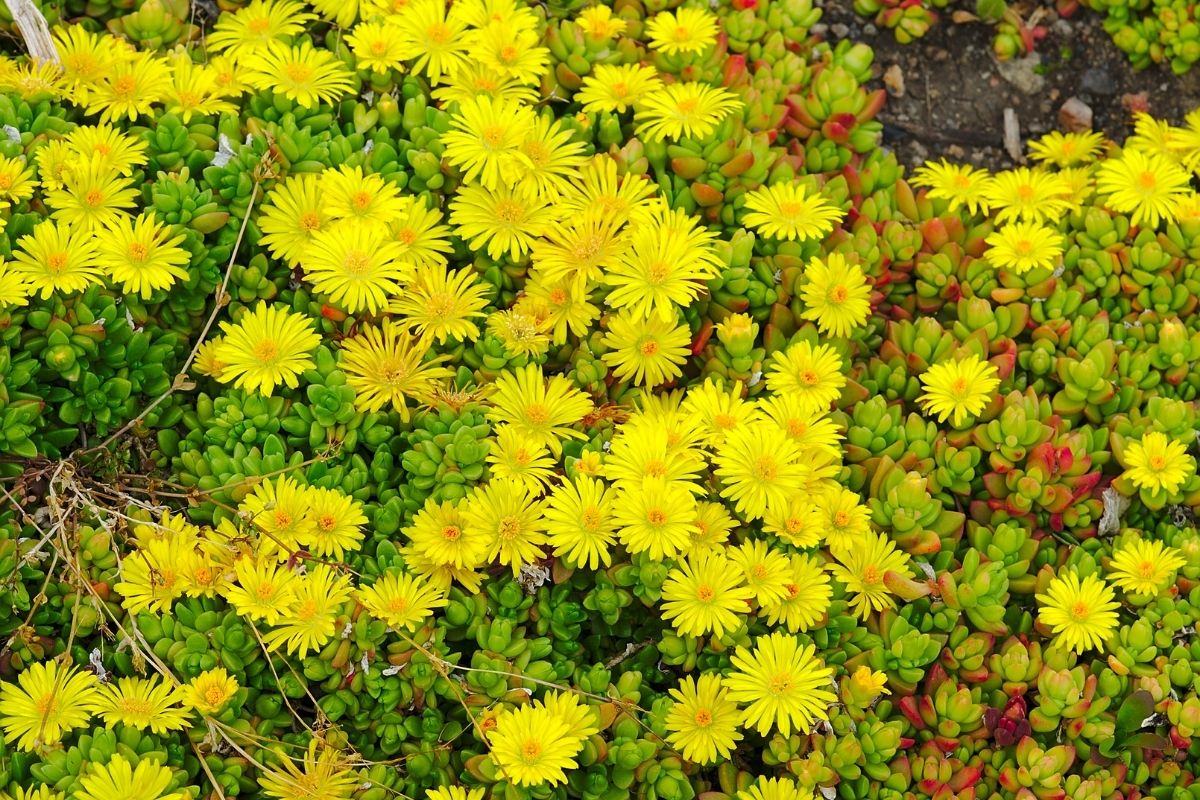
Their leaves are flat, round, or kidney-shaped, and they come in shades of green, gold, red, purple, blue, pink, white, orange, yellow, brown, black, gray, and silver.
They are native to Australia and New Zealand, but they’re now cultivated worldwide. Hardy ice plants do well in partial shade, sun, or even direct sunlight.
They require regular watering during dry periods. They are very easy to grow and propagate.
4. Crystal Plant (Mesembryanthemum Crystallinum)
This is a plant that grows in cold climates. It has large leaves and flowers that grow in clusters. It can be found growing in many different places around the world. It is commonly known as an ice plant or crystal plant.
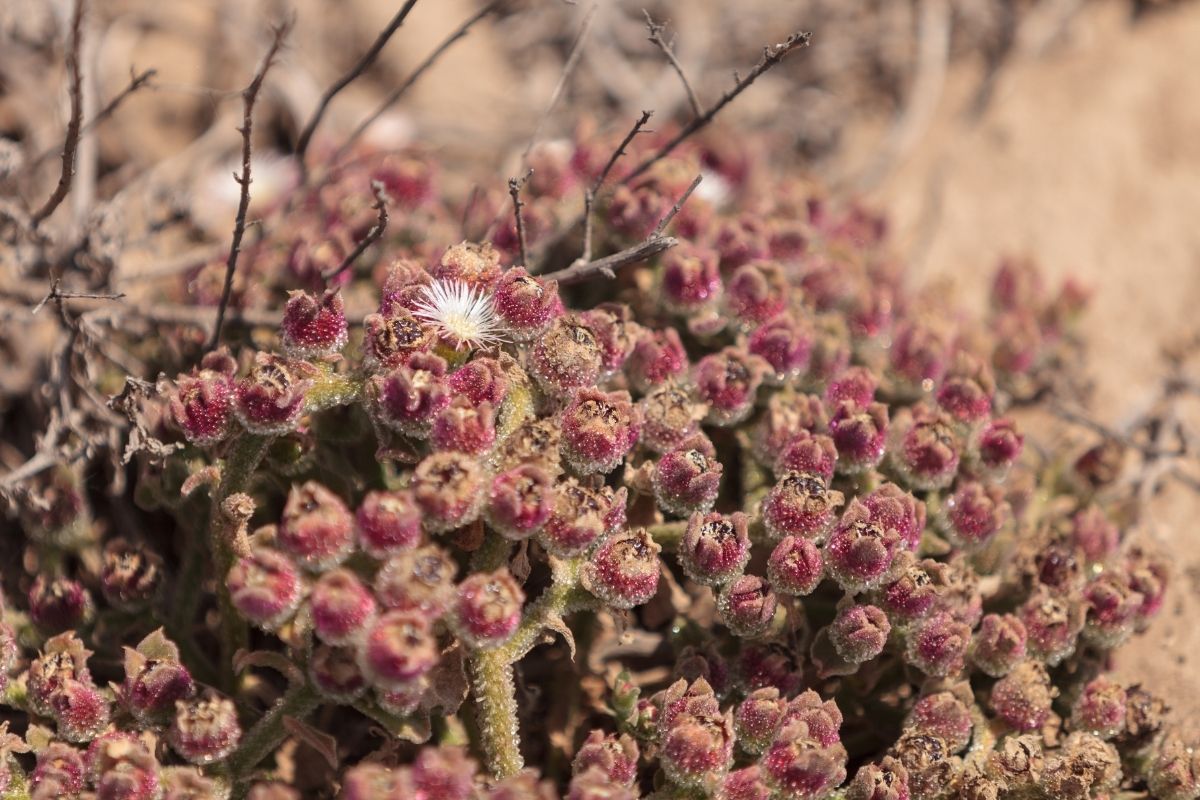
5. White Nugget Ice Plant (Delosperma Basuticum)
Delosperma basuticums are very hardy plants that love water. They’re also called ice plants because of their white flowers.

Their stems are usually covered with tiny bumps. These bumps help the plant stay cool. This plant loves being planted near the ocean or other bodies of water.
6. Variegata Ice Plant (Corpuscularia Lehmannii)
Corpuscularia lehmanniis a beautiful plant with variegated leaves. It grows in arid areas and blooms in the winter.
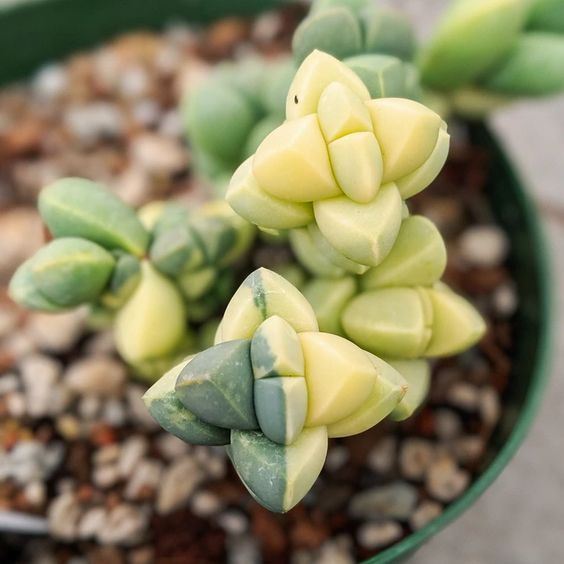
7. Corpuscularia Taylorii
These ice plants grow in cold climates. They have long stems that reach above ground level. Their leaves are shaped like ice cubes. They are not related to the other corpuscularias.
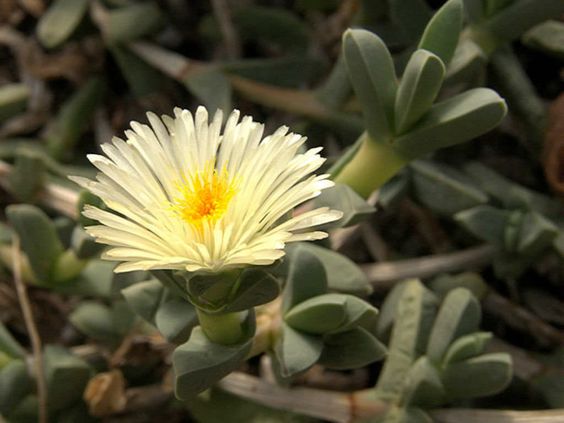
How To Grow Ice Plants Indoors
1) Choose a location where you can get at least 6 hours of direct sunlight each day.
2) Make sure there is good air circulation around your plant.
3) Keep the room temperature between 65°F and 75°F (18°C – 24°C).
4) Water your ice plant regularly. Use a soaker hose to avoid overwatering.
5) Fertilize your ice plant once a month using a liquid fertilizer.
6) Repot your ice plant into a larger container every two years.
7) Mist your ice plant with water every other day.
8) After flowering, cut back your ice plant by half. You can leave the root ball alone until next year.
9) If you don’t plan to re-pot your ice plant, then you can just let it go through dormancy naturally.
10) When you bring your ice plant inside, put it in a cool place like a basement or garage.
11) Put your ice plant outside again when temperatures start to warm up.
12) Once your ice plant starts to flower, move it to a sunny spot.
Growing Conditions For An Ice Plant
Ice plants need sunlight, but they also need some moisture. Watering should occur during dry periods. Feed with a balanced fertilizer, preferably before a rainstorm in winter.
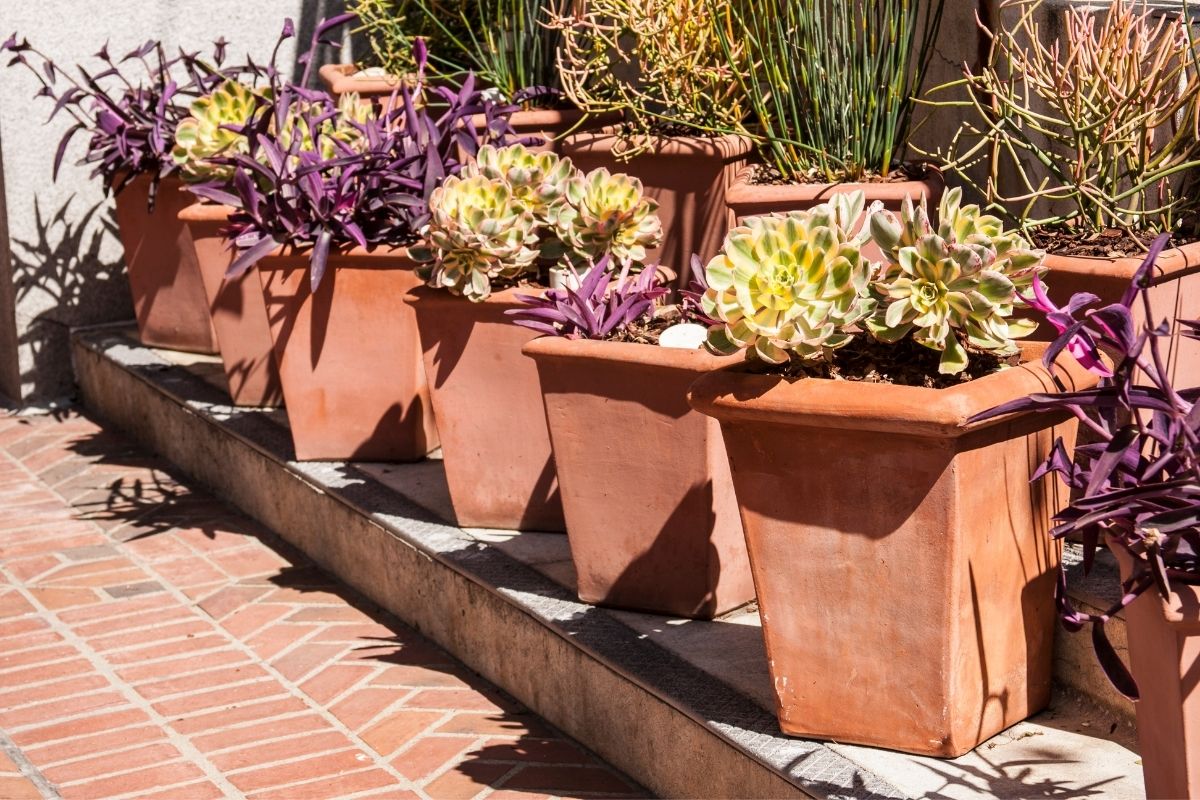
Plants prefer sunny areas. Flowers close when there is too much shade or cloudiness.
How Much Light Do Ice Plants Need?
Ice plants need lots of light to grow well. Full sun gives them the most energy, but if you’re growing them indoors, make sure they get plenty of light. Plants grown in the dark won’t be as healthy or strong.
What Sort Of Soil Conditions Do Ice Plants Need?
Ice plants require dry soil with excellent drainage. They do not tolerate constant moisture, and they don’t grow well in dense clay soil. Sandy and gravelly soils work best for them.
How Much Water Do Ice Plants Need?
Watering an ice plant once or twice per week is enough to sustain growth. Don’t let the ice plant sit in wet soil, because this could cause rot. Mulching with dry material keeps the ice plant drier.

Temperature And Humidity
Ice plants need to be watered regularly during the summer months. In colder climates, it may be necessary to mulch them or place them near a heater. Their hardiness ranges vary by variety. Some varieties are more tolerant than others.
Pruning Your Ice Plant
Ice plants grow in a variety of shapes and sizes. Their flowers bloom in different colors and patterns. Shearing off dead flower stalks keeps them compact and allows them to produce new flowers.
Propagating Your Ice Plant
Ice plants are very easy to grow. All you need to do is take a cutting from the original plant, place it in water, and put it in a sunny window.
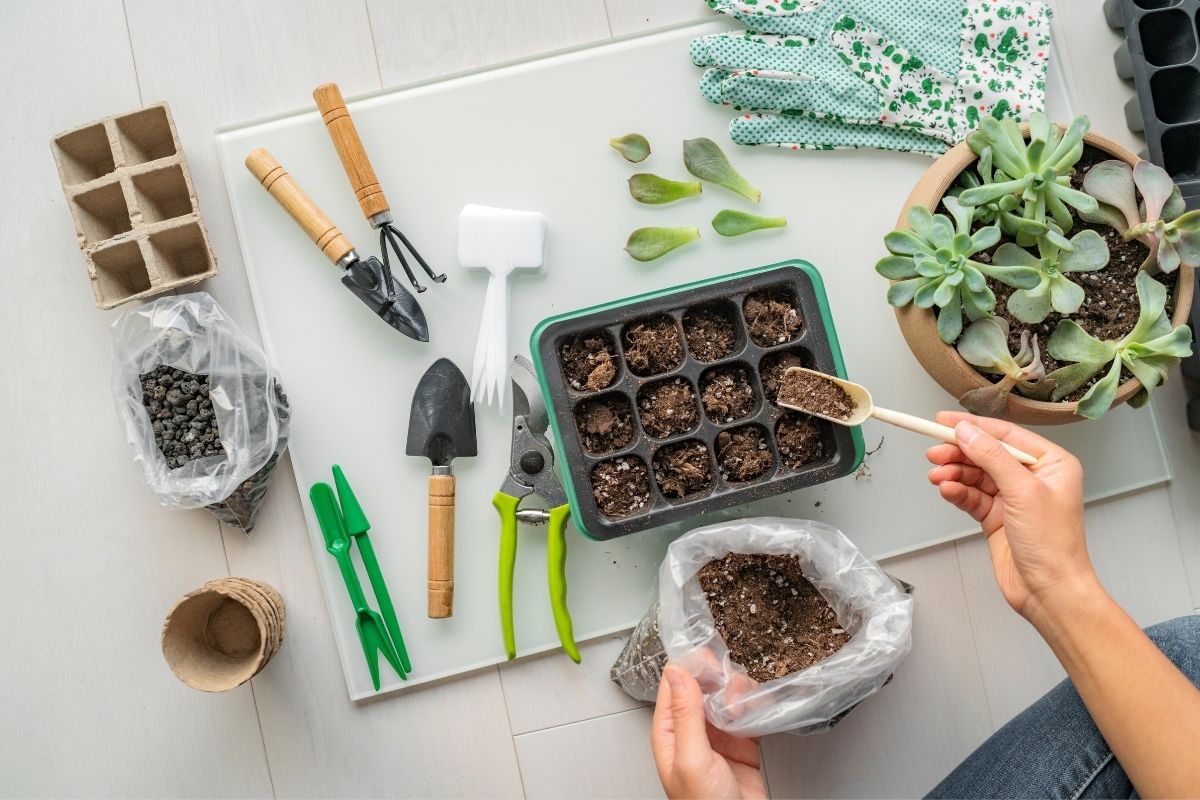
The cutting should be taken when the plant is dormant. Once it starts growing, you can transfer it to your garden.
A mature ice plant needs about four to six hours of direct sunlight each day. Digging up plants can be a challenging job. You should avoid damaging the roots as much as you can.
Use a sharp spade to split the plant into two parts at the root. Replant them carefully at the same depth the plant used to grow. Pat down the soil gently, and lightly moisten the soil.
Problems With Ice Plants
If you’ve decided to become an ice plant parent, it’s important to know about the various problems and pests that you’ll need to watch out for.
Here are the top issues with ice plants:
Downy Mildew
This fungal disease affects many different types of plants including ice plants. It causes yellow spots on the leaves of your ice plant. The symptoms appear first on the lower leaves and spread upwards.
Eventually, all the leaves become infected. Downy mildew spreads easily from one plant to another. It can also survive in soil and seeds.
To prevent downy mildew, try to keep your ice plant away from other plants. Also, clean off any debris that accumulates near your ice plant. Finally, keep your ice plant well watered.
Pests
Some insects eat ice plant leaves. These include aphids, whiteflies, leafhoppers, and mealybugs. Some pests feed on the stems. These include spider mites, thrips, and caterpillars.
Various diseases affect ice plants. Some of these include black rot, powdery mildew, and verticillium wilt.
Where Can You Buy Ice Plants?
Ice plants are sold at most nurseries during springtime. Check with your local plant nursery to see what types of ice plants they have. If you’re looking for a specific type, you may need to travel to a different nursery.
Final Thoughts
Growing ice plants can be really interesting, and for your hard work and dedication, you are rewarded with a beautiful mature plant.
If you follow the steps above to care for your new ice plant, you’ll find that it grows well and lasts a long time.
Lots of ice plants are pretty hardy plants and can withstand different temperatures and limited water supplies, but you’ll still need to make sure that your plant is getting everything it needs to grow properly and stay alive.
So, head to a nursery and enjoy caring for your ice plant!







